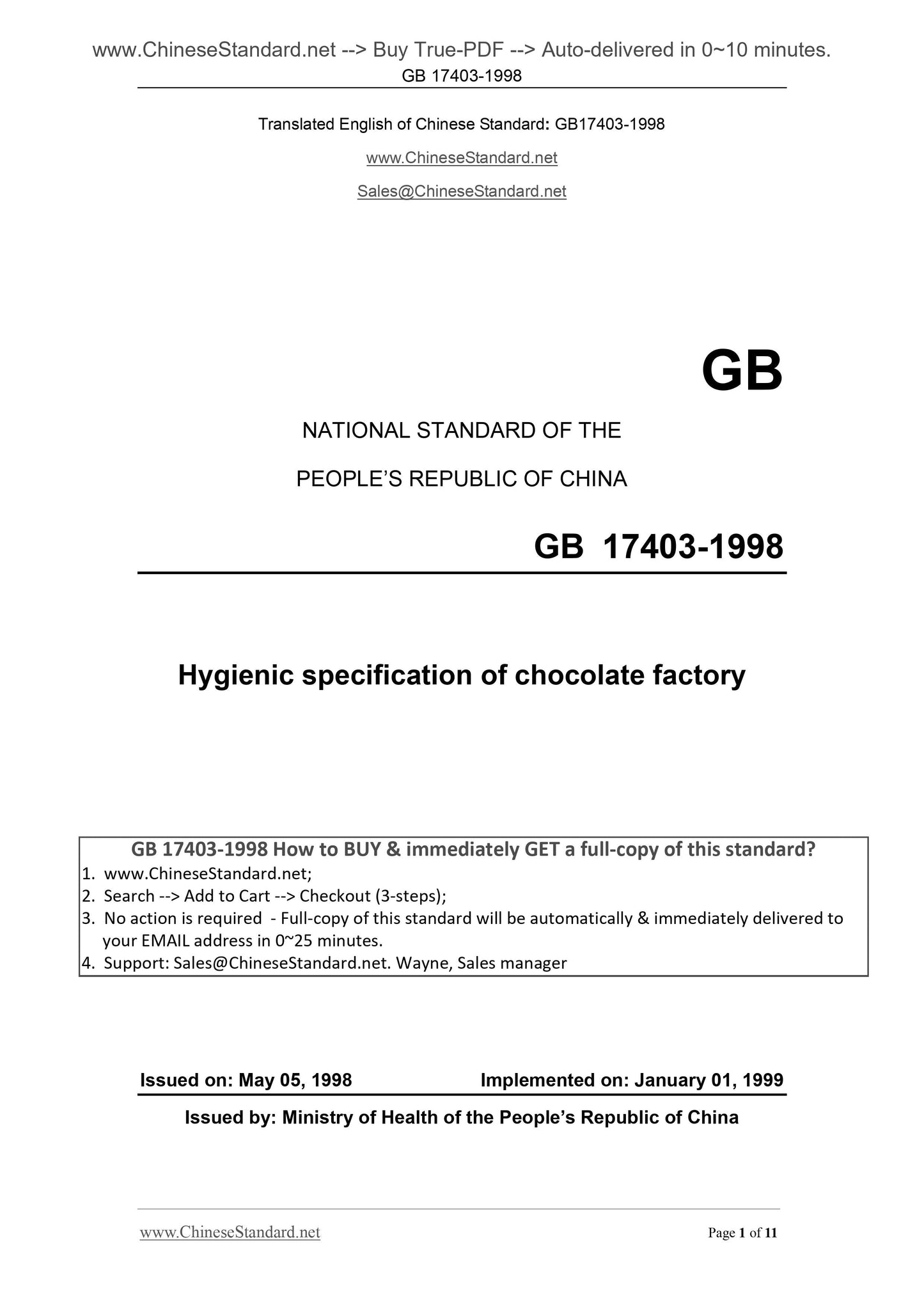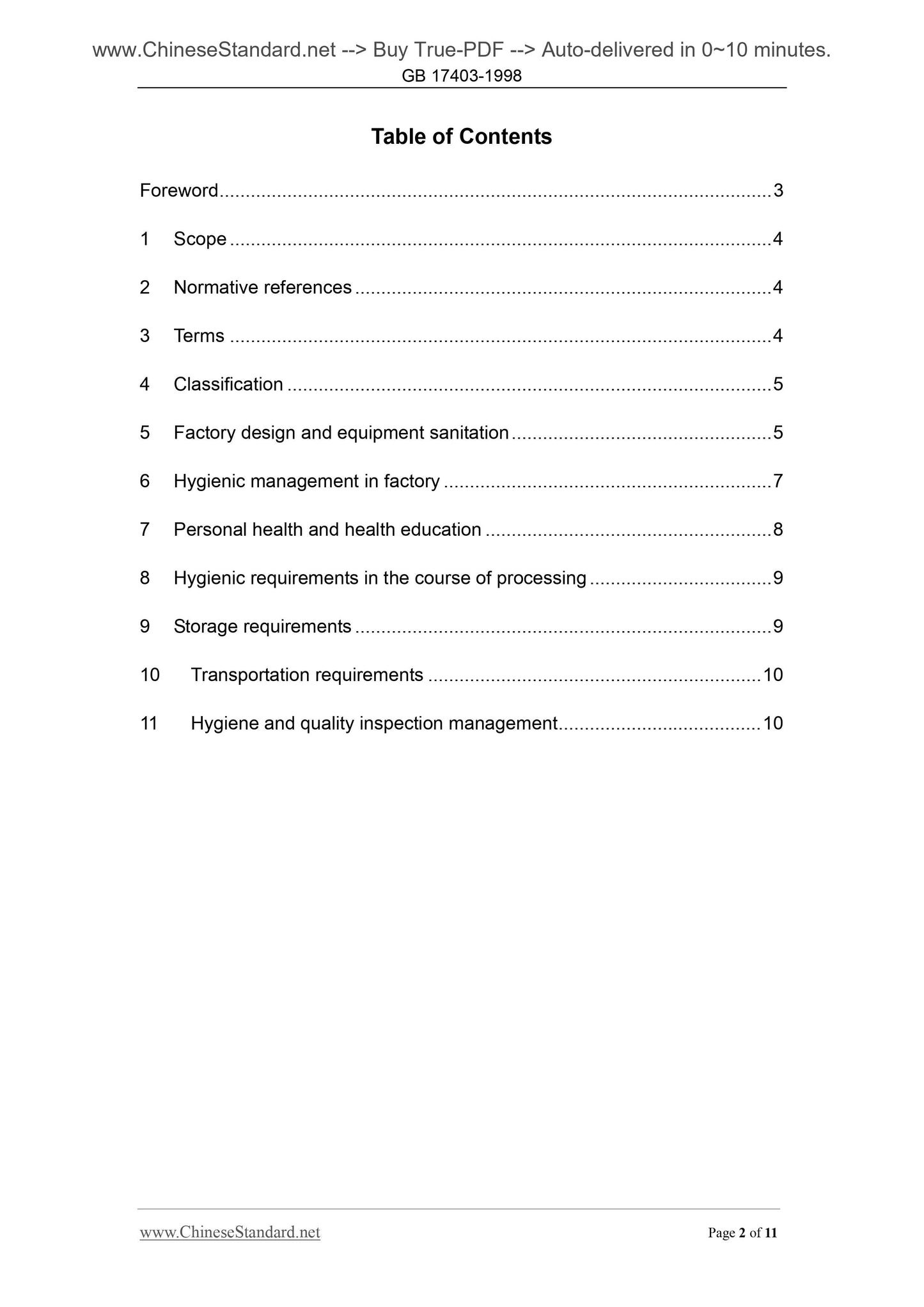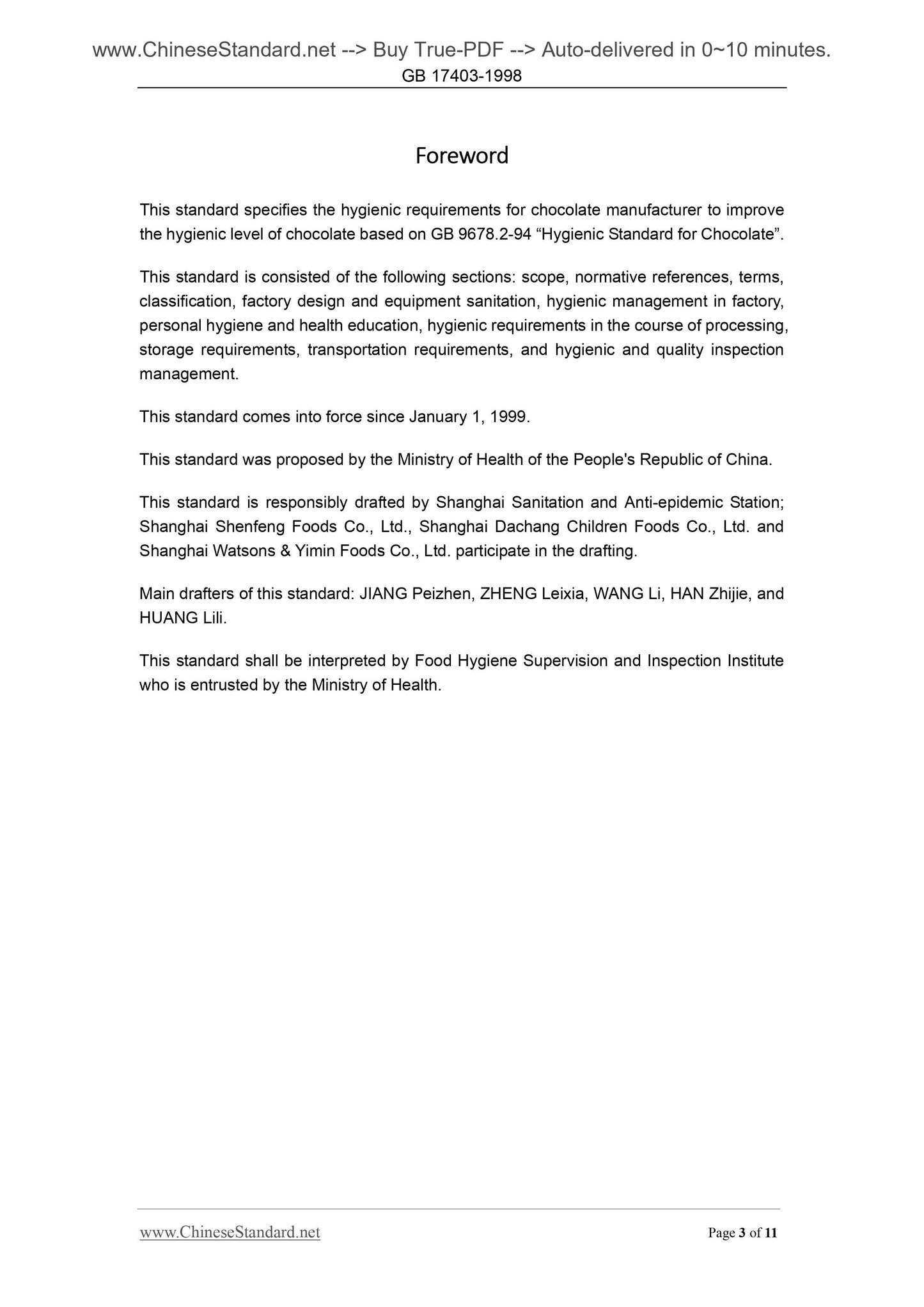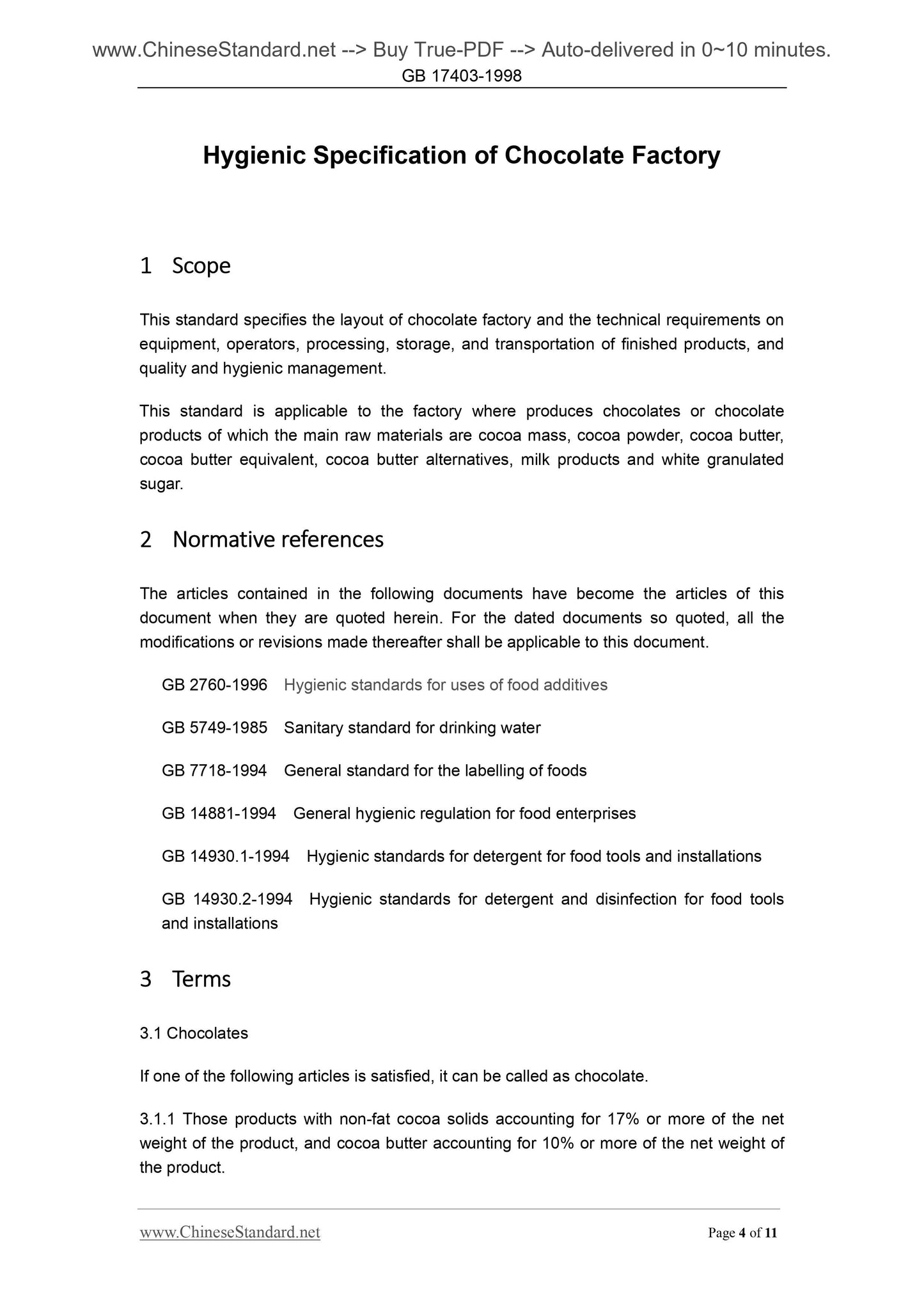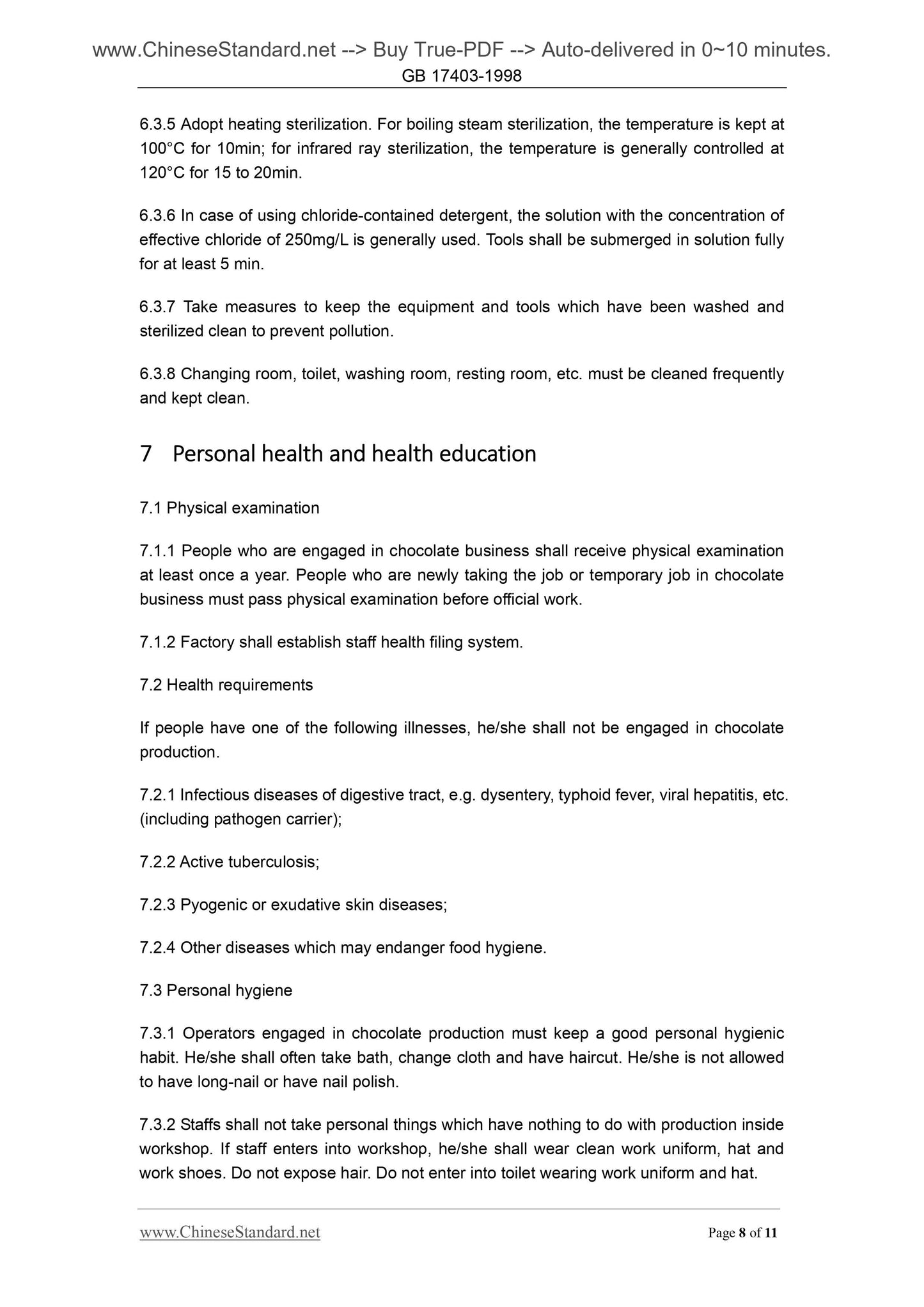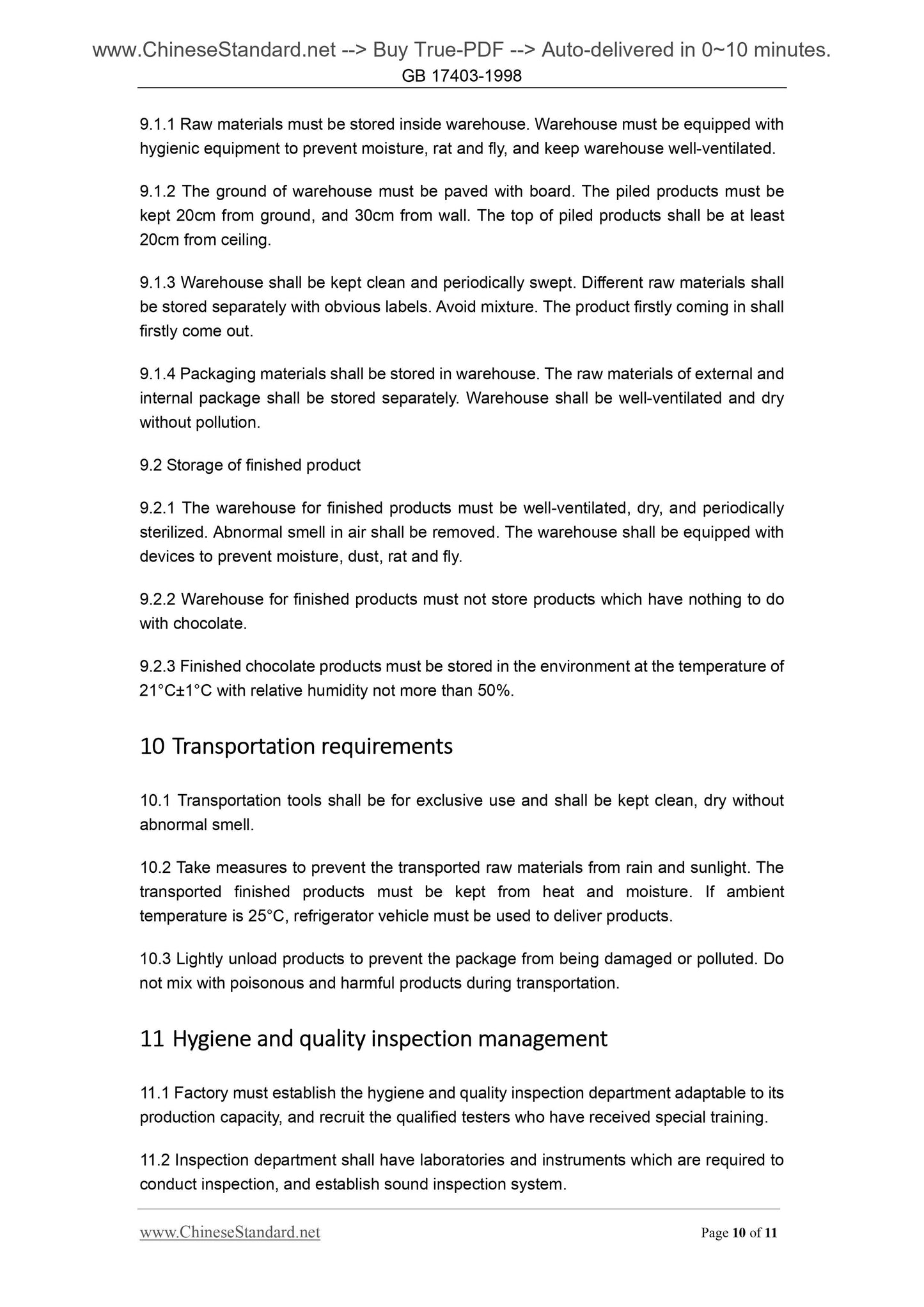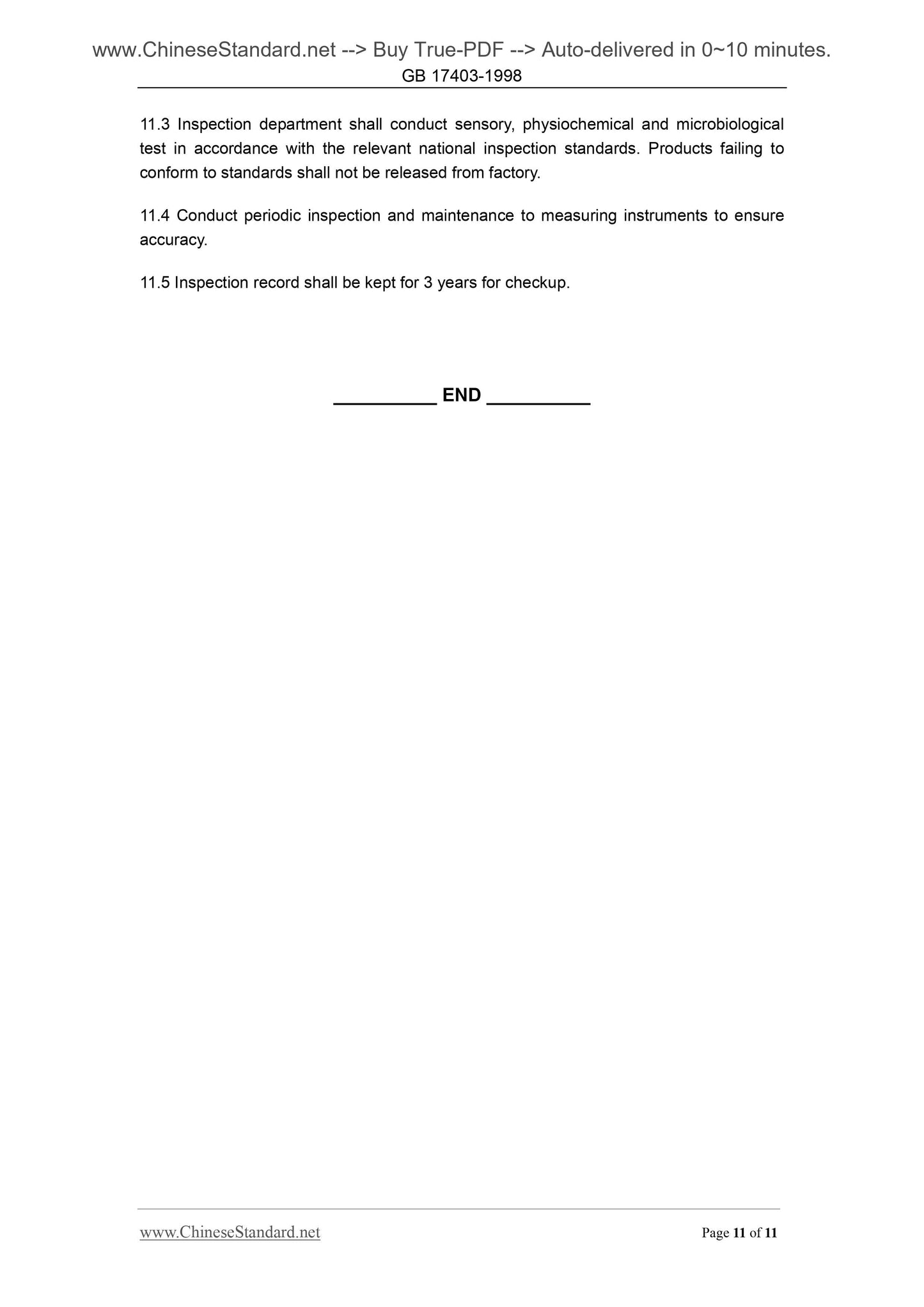1
/
of
7
www.ChineseStandard.us -- Field Test Asia Pte. Ltd.
GB 17403-1998 English PDF
GB 17403-1998 English PDF
Regular price
$70.00
Regular price
Sale price
$70.00
Unit price
/
per
Shipping calculated at checkout.
Couldn't load pickup availability
GB 17403-1998: Hygienic specification of chocolate factory
Delivery: 9 seconds. Download (and Email) true-PDF + Invoice.Get Quotation: Click GB 17403-1998 (Self-service in 1-minute)
Newer / historical versions: GB 17403-1998
Preview True-PDF
Scope
This standard specifies the layout of chocolate factory and the technical requirements onequipment, operators, processing, storage, and transportation of finished products, and
quality and hygienic management.
This standard is applicable to the factory where produces chocolates or chocolate
products of which the main raw materials are cocoa mass, cocoa powder, cocoa butter,
cocoa butter equivalent, cocoa butter alternatives, milk products and white granulated
sugar.
2 Normative references
The articles contained in the following documents have become the articles of this
document when they are quoted herein. For the dated documents so quoted, all the
modifications or revisions made thereafter shall be applicable to this document.
GB 2760-1996 Hygienic standards for uses of food additives
GB 5749-1985 Sanitary standard for drinking water
GB 7718-1994 General standard for the labelling of foods
GB 14881-1994 General hygienic regulation for food enterprises
GB 14930.1-1994 Hygienic standards for detergent for food tools and installations
GB 14930.2-1994 Hygienic standards for detergent and disinfection for food tools
and installations
Basic Data
| Standard ID | GB 17403-1998 (GB17403-1998) |
| Description (Translated English) | Hygienic specification of chocolate factory |
| Sector / Industry | National Standard |
| Classification of Chinese Standard | C53 |
| Classification of International Standard | 67.040 |
| Word Count Estimation | 115,136 |
| Date of Issue | 1998-05-05 |
| Date of Implementation | 1999-01-01 |
| Issuing agency(ies) | Ministry of Health of the People Republic of China |
| Summary | This Chinese standard specifies the Chocolate Factory design and facilities, operations personnel, process, product storage, transportation and health management aspects of quality and technical requirements. This standard applies to cocoa liquor, cocoa powder, cocoa butter, cocoa butter, cocoa butter, milk and white sugar as the main ingredient in chocolate or chocolate products factory. |
Share
